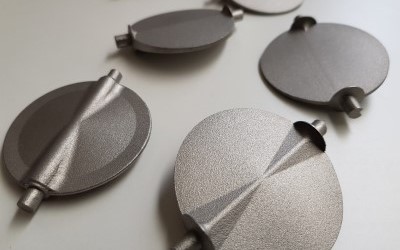What is Metal 3D Printing?
INTRODUCTION
Metal 3D printing, is one of the most rapidly growing additive manufacturing techniques, simply because highly complex and functional parts can be made out of similar material as production components.
3D printed metal parts are produced directly from a 3D CAD model. The main ingredient to print such a part is a powder of a metal alloy.
There are a handful of leading industrial metal 3d printing technologies available. Direct Metal Laser Sintering (DMLS) and Selective Laser Melting (SLM) are commonly used for high-end applications.
DMLS and SLM machines, work on more-or-less similar technologies. Direct metal laser sintering (DMLS) involves a laser beam to melt and slowly fuse the metal powder, layer by layer, to form the 3d object. This process repeats itself until the part is fully completed.
The particles inside the metal are heated in a controlled environment so that they fuse together, but not melted completely. It uses alloys made up of metals with varying melting points. Whereby, in SLM process single metal is used, as it prints at one temperature. In SLM, a high-powered laser fully melts each layer of metal powder, rather than just sintering it.
Applications of Metal 3D Printing
- Aerospace, Automotive, Space industries, use 3D printed metal components in various applications.
- Tooling and moulding inserts for quick turnaround of production parts.
- Medical or Healthcare products, surgical instruments and implants.
- For custom-made parts or spare-parts-on-demand to reduce the inventory cost.
- Aerospace and Engineering components with complex geometry demanding high performance and thermal resistance.
- Jewellery items, Decorative Artwork, Sculptures, Customisable gift items.
- Building hardware, Plumbing and Tap-ware, Architectural items.
Limitations of Metal 3D Printing
- Metal 3d printing is still expensive compared to traditional manufacturing techniques, such as CNC machining.
- There's no substantial saving for volume production of metal printing parts.
- Typical, 3d metal printed parts have rough grainy surface finish, which could be improved with secondary operation such as machining, polishing.
- Feature detail is not as crispy and sharp as CNC machined parts.
Available Materials for Metal 3D Printing
- Aluminium: AlSi10Mg, is an aluminium alloy with good hardness and strength.
- Stainless Steel: SS316L, has excellent strength with highly corrosion-resistance.
- Tool Steel: With high strength and wear resistance, tooling grade maraging steel.


